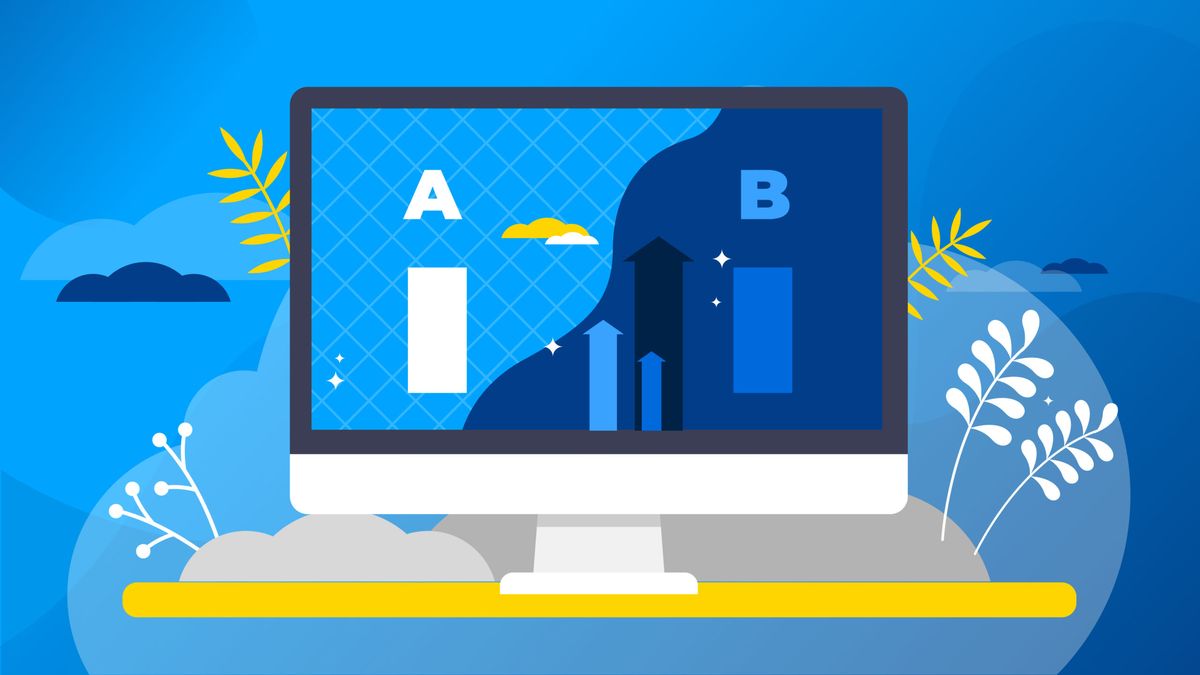One of the biggest challenges when it comes to selling online is the fact that things change and sometimes things that work won’t work as well as they used to. This is why running an e-commerce business is a continuous process of improvement and adaptation.The recent events surrounding the pandemic have certainly put things into a flux and many sellers found themselves in uncharted territories. People’s shopping habits and demands for different products have created a whole new set of circumstances that needed responding too. Split testing is a way you can adapt to the changing times and improve your online marketing strategies.
Why should I use split testing?
Split testing is the closest thing that gets you to “having your cake and eating it too.” By making adjustments to your website, you can understand what your consumers respond to and can adapt your marketing in order to cater to their needs. It allows you to explore different changes to your listings, letting you know what can be improved or what you are doing that works. We don’t want to be in that position where you are uncertain if some opportunities were left unexplored. If done correctly and precisely you should be left satisfied that you’ve explored all your options and made the best call with the information available. Split testing makes analysis a breeze, is relatively easy to accomplish, and provides valuable insight about your marketplace.

What is Split Testing?
Split testing is a lot like a science experiment, you need to carefully set up the conditions and set up the parameters beforehand in order to best assess the results. In order to get the best information possible, which will in turn allow you to make the best decision moving forward, requires you to set up your split tests in such a way that the results you get are valid and that your “experiment” is not tampered in any way. This isn’t as complicated as it might sound, it merely requires some diligence and attention to detail. It’s mostly all about setting up the parameters and keeping track of things in an effective way. You also need to know what the expected effect should be and what they should be compared to.
When selling online, there are a number of things you can split tests on. If we take a listing of a single product you can basically take any element of it and split test a few varieties of that one element and measure the effects. However, split testing on some elements is more fruitful than others, which is what we are going to be getting into.
Split Testing Components
The title image
This image is the very first image that is on your listing. That’s the first image people see when your listing shows up in the search or as a sponsored product. If the eyes are a window to the soul, then the title image is the window to your product. Needless to say, the first impression you make with your product is an important one. There are rules and guidelines in regards to what sort of image such as:
- Image size: Images should be at least 1000 pixels in either width or height. Some platforms recommend 2560 pixels wide.
- Image frame: The product should fill 85% of the frame.
- Background color: ALL product photos should have a pure white background.
- File format: You can upload JPEG, PNG, GIF or TIFF files.
- Color mode: Both sRGB and CMYK are accepted.
However, there is a difference between “should” and “must”. Based on these guidelines, you might be thinking that all you can do is have a 1 shot of your product on a white background. Well, sort of, but even within that limited range of possibilities you might have a lot of room to experiment. Let’s take a look at these 3 different listings for baby strollers:

As you can see, the top and the bottom listing have special features that allow for the portion of the stroller to be detached or reconfigured into a different position. This is how the sellers owning these 2 listings have managed to make their product more intuitive and showcased more of its utility. You can argue that they are making a better first impression, or at the very least that they are conveying more information with their title image which enables them to be a more attractive purchase for the customer that is looking for those features. You might be thinking that the stroller in the middle doesn’t have any special features, therefore the title image is not done in such a way to reflect them. The fact of the matter is that the stroller in the middle has more features than the other 2:

This is an obvious lost opportunity, there is no telling what the effect on the sales and the conversions of this listing would be if they simply showcased the features of the stroller in the title image. This seller could really benefit from some split testing.
What we saw were examples of sellers being creative within the confines of “85% of the image should be the product on a white background”. However, depending on your category you can bend the rules and guidelines a little bit and you can things like these:

There is a lot to consider, and a lot of work that goes into expanding your Amazon small business to an international market. Laws, taxes, foreign currency, cultural norms, and marketing are all things that need to be figured out before you make your move, but with some research and prep work you are opening your business to a fantastic new revenue stream.
PingPong is many Amazon sellers first stop when looking at a global expansion. With a free account that can be set up in as little as one day, you will have access to competitive foreign currency exchange, international banking options, and expert support to make your transition as easy as possible. Set up your account at PingPong today to get started on your #internationaljourney.
Secondary product images
The rest of your product images do not fall under the same restricted guidelines as the title image and you have more liberty to include infographics or hero shots, or shots of your product being used, you can also educate the potential customer about your brand it’s dimensions etc…Like we can see on this drill set listing:

Keep in mind that the product images, including the title image, have no bearing on the SEO and are not directly related to your organic rankings, they serve a purely psychological purpose. It is no secret that due to the ever increasing portion of our lives we spend online, the human attention span is decreasing. With that in mind, you can expect a good portion of your customers to be making the decision to buy or not to buy your product largely based on images.
This is why it is paramount for your set of listing images to represent a coherent narrative and that they showcase all the important information about the product and highlight its benefits and features. Needless to say there is more than 1 way of going about this.
If you believe that a new set of images, or simply some slight modifications to your listing images, like rearranging the order or just adding 1 or 2 new ones could have a potential impact on your conversions, then you should run a split test.
The setup should be much the same as it is with split testing your title image. The only difference being that this time you are not looking for increased session, you are looking for increased session conversions. The idea is that by creating a better presentation using your product images you should be able to convert a higher percentage of the people looking at your listing into customers.
The matter of conduction this particular kind of split test is in taking all your sessions from a week where you had the previous product images set up take the percentage of them that turned into sales and compare it to the week of the same parameters with your new setup.
Bullet points
Bullet points essentially serve the same purpose as the product images in terms of the experience and the information a potential customer is going to get while they are looking at your listing. However, unlike the product images, bullet points serve an additional purpose. Since bullet points are relevant in terms of indexing and organic rankings due to the fact that their contents carry weight with the A9 algorithm.
When it comes to narrative building or creating a coherent presentation with your bullet points, you have a lot of options in terms of the order of the points you want to make or even how they correspond with the images. Like the example below:

So if you are of a mind to experiment with this aspect of your listing you should be paying attention to the keywords you have included into your bullet points and make sure that the same keywords are included into the version you wish to experiment with. If you are able you should try to include even more keywords in the new copy if possible, just don’t forget to use each and every one of the old ones.
As mentioned before, as you are splitting testing your new bullet points copy you should be paying attention to the session conversions the same as with split testing product images. You can apply the same approach by comparing the season conversions from a week before the change and the week during the testing period.

Selling Price
Unlike the last 3 listing components, the selling price is much more complex and requires more points of data in order to accurately assess the effects of a price change. The selling price can affect both the number of sessions and the sessions percentage, however, those are not the most relevant factors when it comes to split testing a price.
When it comes to how you price your items, there are many factors that come into play and a surprisingly numerous ways of doing it. Even though it’s just a number, there are a plethora of psychological processes that happen when someone is looking at a price tag, in fact there are so many that I wrote a whole separate article about it, which you can find here.
The effect you are looking for in achieving the pricing is very straightforward – higher profits. If you are reducing your price you would hope to make more sales that would increase your overall profits, on the other hand, you might be increasing the price in hopes of having higher profits on the same or slightly lower sales volume.
The reason why prices are complex is the fact that when you change your price you need to calculate the margins per individual product as you do so. Those include things like manufacturing costs and shipping fees.
Assuming that you don’t make any changes to your shipping and manufacturing cots, there is one factor that will definitely change your margin structure – the referral fees. Referral fees are always a fixed percentage, usually 15%, of the total selling price. Some types of products have a different referral fee structure and you should look into finding the exact one for your product in question. In fact, simply learning about the structure of your referral fees might cause you to consider a different pricing strategy.
Once you have calculated your margins you can split test your new price in comparison to the old one. In this instance you should go for a longer test, ideally at least 2 weeks. This might be a lot, but remember you need to calculate your total profit in that period, which is why the longer the stretch of time the more insightful the results of your split test are going to be.
You can structure your test to be for example 20 days, where you change the price back and forth every 4 or 5 days between the 2 and meticulously track the total costs and the revenue between the 2 periods. An even better way to do this would be to let’s say run a month long test where you switch the 2 prices every day. This would require you to switch back the prices once a day exactly at midnight which might be a bit tiresome. However, if you do your research you might find software that does it for you.
Another reason why prices need to be tested in a more long term fashion, is because the sales volume affects organic rankings. Especially if you are going for a higher price strategy, in which case you might experience a lower sales volume.
Additional split testing tips
Don’t make changes to your PPC. As you are testing between 2 different listing configurations or prices you need to keep the rest of the factors that might influence your sales. If you change your PPC setup as you say switching back and forth between 2 configurations you will most likely get unusable results.
Use PPC as another indicator. The information you can get from your PPC reports can be very valuable and if applicable should be used in tandem with the information from your business reports. For example, when you are split testing your title image in hopes of getting more sessions, you can expect that you will get a higher number of clicks on your PPC ads. The same can be applied to your click through rate when you are testing for new bulletins or product images. The idea is that you will convert more visitors to your listing into customers, which is exactly what CTR is for in terms of clicks you got from advertising.
Don’t run tests on “big sale” days – On days like Prime day, Black Friday or Cyber Monday a lot of sellers experience higher sales than usual. Also general holidays are also times when people’s shopping habits change for a short period of time. The obvious ones would be Christmas and Halloween, however the holidays that don’t necessarily have any consumerist implications can also be irregular, due to people spending the day in some customary manner.
Avoid testing different aspects of the listing simultaneously – You might be thinking that for example, split testing your product images and bullet points at the same time would be a good idea since they are aiming to get the same effect. This is not necessarily a bad idea, however, it should be done if both of those listing elements are supposed to create a narrative in combination with one another. Otherwise, you might be getting some effect and you wouldn’t be able to attribute it to one or another necessarily. If it’s, for example, the images that are causing the desired effect and not the bulletins, then you would know that you can look into improving your bulletins even further. The same goes for anything else. Also, odds are that you will have priorities and you will most likely see only 1 aspect at the time that might need improving, so you won’t be tempted to run simultaneous split tests.
In Conclusion
Split testing is the greatest way to make a change in your listing without having to fully commit to it and make the best choice that will give you the results you are hoping for. Granted, sometimes the decision to make some sort of a change will be obvious and it won’t reacquire any split testing. However, in a situation like this, where people are relying heavily on consumer shopping habits that are in flux, you will be having trouble adapting and committing to that adaptation. Obvious solutions are difficult to find, and that’s why you can split the test with your best guess. Also, in more regular circumstances, you will be able to make bold moves without risking as much and hopefully finding some amazing opportunities for growth. Just remember, set your parameters in advance and collect the proper data. Also, the more split test you run, the more profoundly you will understand your product and your customers, so you won’t have to guess as much going forward. Mastering this will make you a much better seller.










